Vitruvius, a Roman writer and architect, demanded all architecture to be in the likeness of humans who are the reflections of the perfect divine. Since Vitruvius, many classical Roman architecture were based on the principles of Order and Symmetry to reflect the proportions of the human body. Buildings from the ancient Roman and the early modern period thus synthesized the architectonic and the human proportion into a singular architectural form.
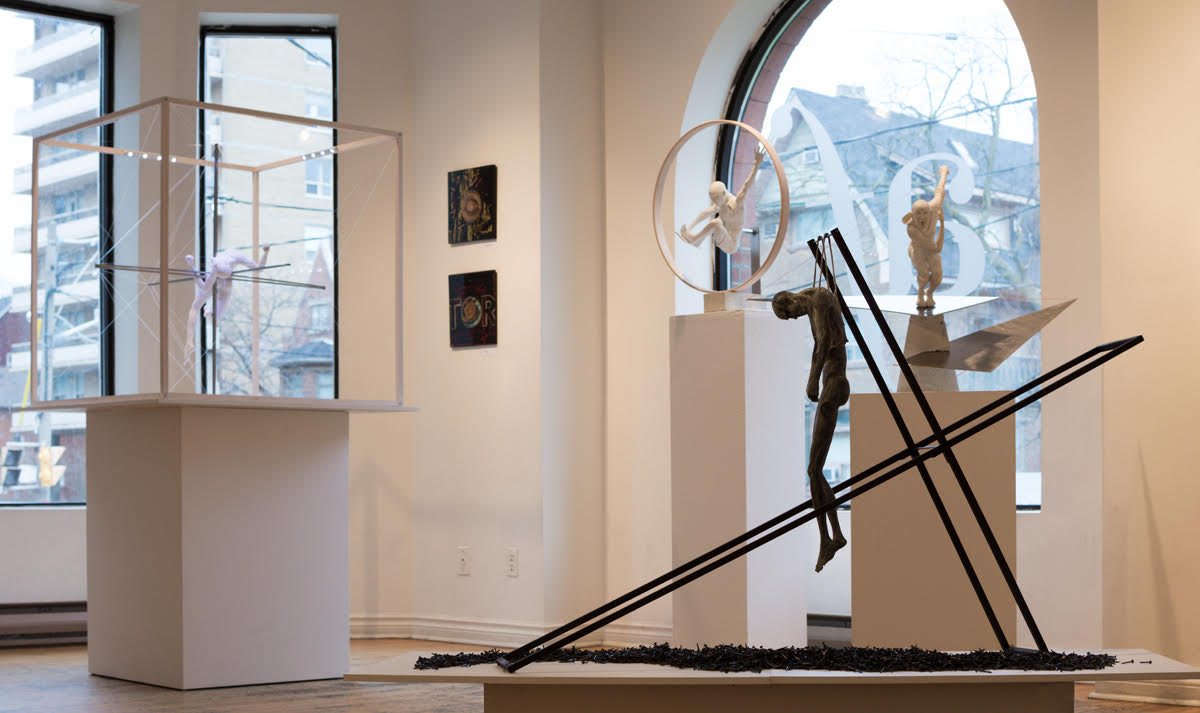 W.W. Hung, Architectures of the Body and the Built Environment: Impressions, Sensations and Expressions, installation view. Courtesy of the artist
W.W. Hung, Architectures of the Body and the Built Environment: Impressions, Sensations and Expressions, installation view. Courtesy of the artist
In contrast, in his exhibition entitled Architectures of the Body and the Built Environment: Impressions, Sensations and Expressions, W.W. Hung separates the nature of the architectural and the human forms yet distinctively composes them together into a single piece. The exhibition showcases seven eccentric and profound sculptures, which all possess the opposing ideals of the concrete and the abstract forms, balance and asymmetry, and physicality and emotionality. By presenting his sculptures through the bilateral concepts, W.W. Hung formulates a dialog within the sculpture as seen in Shards (2013). A male figure gesticulates with his legs bent and back arched while his outstretched left arm grabs and pulls onto a burgundy thread that forms a triangular shape reflecting the triangle fragments upon which the figure stands. The expressiveness of his movement and his facial expression differs from the geometric triangular shape that acts as the support-system. Such tension between the human form and the abstract form is furthered by the materiality of the sculpture. Formed with two opposing materials, resin and stainless steel, the textured and the detailed resin sculpture contrasts with the cold and emotionless qualities of the steel. The intentional juxtaposition between the polarizing shapes and the materials adds to the emotionality and the fluidity of the figure in the center highlighting the essence of the human existence.
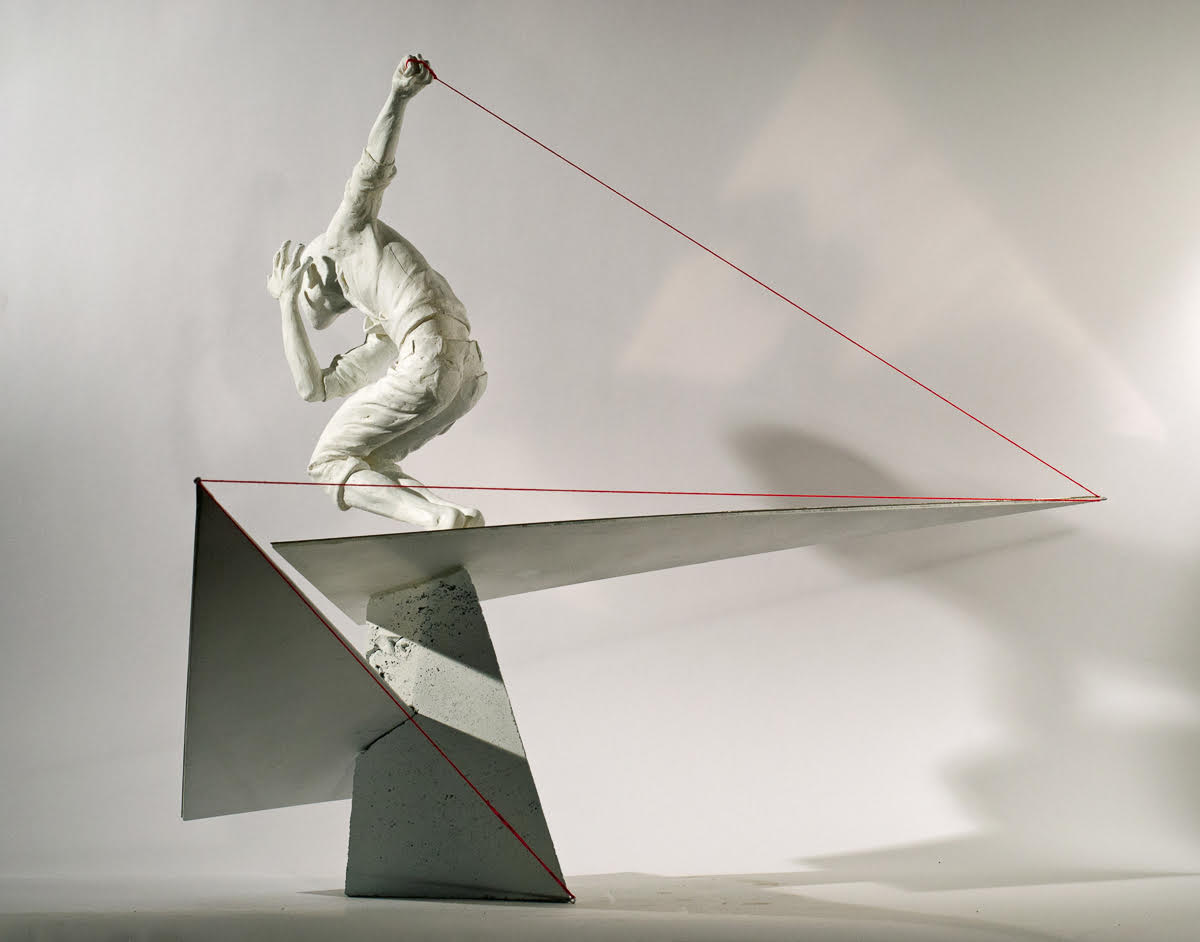 W.W. Hung, Shards, 2013, resin, stainless steel, concrete, thread, 38 x 18 x 25 inches. Courtesy of the artist
W.W. Hung, Shards, 2013, resin, stainless steel, concrete, thread, 38 x 18 x 25 inches. Courtesy of the artist
The tension between the shapes and the materials to express the human condition and human tenacity is exemplified in Pull (2012). It is an odd sculptural work that captures a woman taking a big stride with her muscular arms on her sides, yet she is connected to a steel wire and an arc as if to form a bow. No matter how fast she runs and tries to escape, she is in a constant state of running. Through the evident tension between the woman and the arc, the sculptor alludes to the realities of the world, where women strive to escape the inequalities within the male-driven society. The sculptor purposefully desexualized the female figure through the bald head, muscular arms and legs to object to the constant sexualization of the female form.
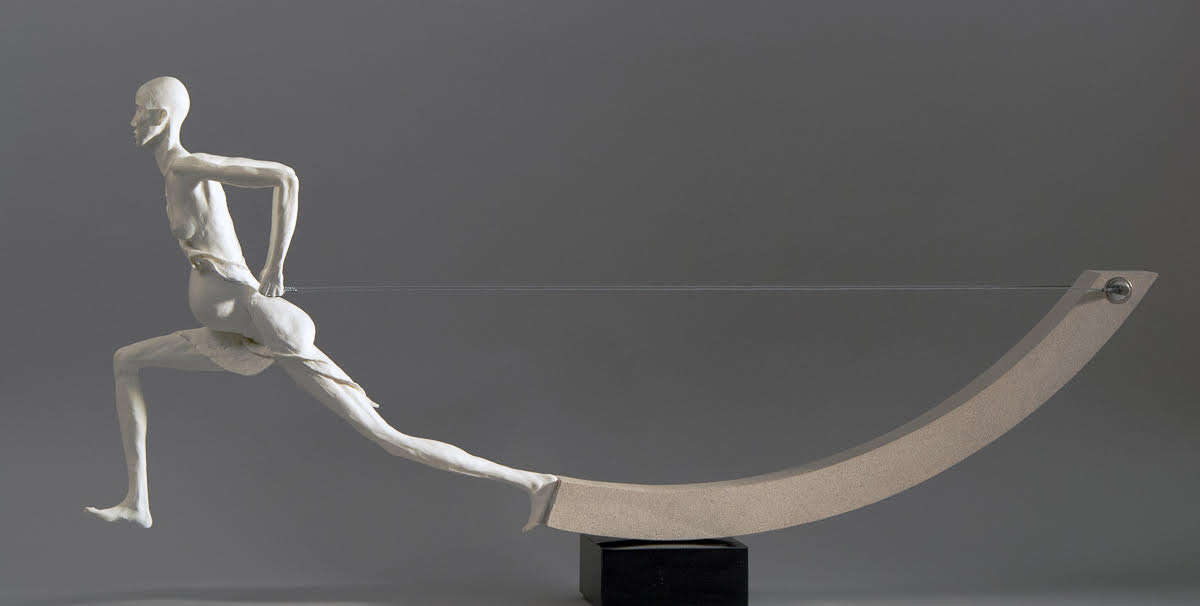 W.W. Hung, Pull, 2012, resin, limestone, marble, steel wire, 40 x 5.5 x 19.5 inches. Courtesy of the artist
W.W. Hung, Pull, 2012, resin, limestone, marble, steel wire, 40 x 5.5 x 19.5 inches. Courtesy of the artist
On a deeper level, W.W. Hung fuses a psychological aspect into the sculpture by embedding the notion of both physicality and the emotionality into his work seen in Aftermath (2011). Capturing the disturbing moment after death through the solemnity and the stillness of the human figure, the viewer can feel the pain and the agony the man endured during his crucifixion as evidenced by the tilted cross upon which he hangs. The sculptor conveys in this single sculpture the essence of the human life as well as the termination of it.
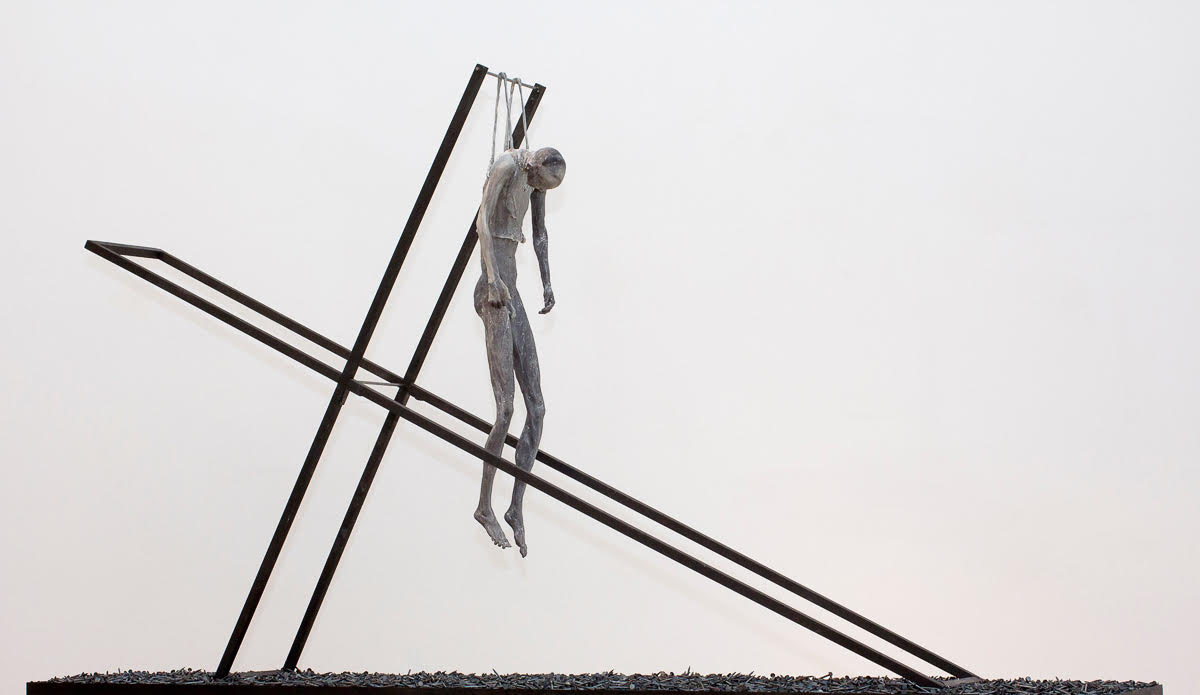 W.W. Hung, Aftermath, 2011, resin, wood, steel, nails, 60 x 12 x 32 inches. Courtesy of the artist
W.W. Hung, Aftermath, 2011, resin, wood, steel, nails, 60 x 12 x 32 inches. Courtesy of the artist
W.W. Hung’s interest in the human form derives from his interest and passion for dance and choreography. In his Purge / Octahedron Redux (2015), the sculptor emphasizes the human form by stripping him of his clothes and leaving him with his bare skin. Consequently, the viewer can observe details of his muscles, tendons, and bone structures through which the figure exudes his frustration of being trapped within the boxed frame with strings surrounding him.
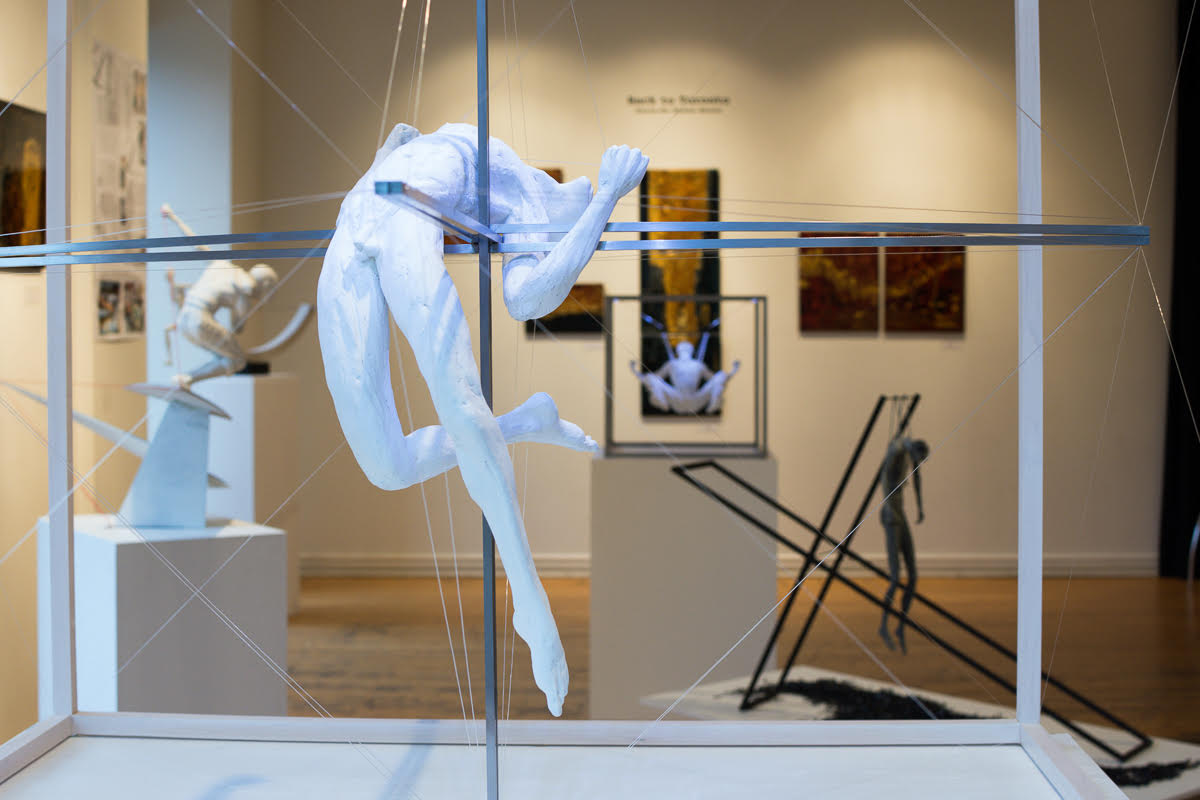 W.W. Hung, Installation view with Purge/Octahedron Redux, 2015, resin, stainless steel, wood, monofilament thread, 37 x 37 x 37 inches (centre). Courtesy of the artist
W.W. Hung, Installation view with Purge/Octahedron Redux, 2015, resin, stainless steel, wood, monofilament thread, 37 x 37 x 37 inches (centre). Courtesy of the artist
This exhibition that showcases the human form reflects the sculptor’s goal, that is, to create universal works. By juxtaposing the architectonic forms to the human forms, W.W. Hung emphasizes the human condition, what it means to be a human being. He is interested in exploring the human body and its forms as he ponders upon what the body can express. A quote by Martha Graham which Hung cited perfectly epitomizes what these sculptures are about: “body says what words cannot.”
Katerina Bong
*Exhibition information: January 11 – February 4, 2017, Alliance Francaise, 24 Spadina Road, Toronto. Gallery hours: Wed – Sat, 12 – 4 pm.
